
A show about relationships with the land
There are many ways to listen to the show: Listen live on CFRU 93.3 fm broadcasting from the University of Guelph Mondays at 6pm EST or listen to the podcast via Spotify, Apple, or just follow the rss feed.

Ep. 256 : Apple Scat of Coyotes and Red Fox
In the later part of the Summer, I was walking with my friend and colleague Tamara when we came across some scat with Apples in it. I can’t remember what brought it up but she mentioned that she has seen more scats composed mostly of Apple left by Coyotes rather than by Red Fox. This got me wondering.. who eats more Apples, Coyotes or Red Foxes? This question began a weird hook in my mind, and everytime I noticed Apples, Apple based scat, Coyote scat or Red Fox scat, the question would come to mind.
I decided I would go for a walk and try and measure a ton of scats, look for evidence one way or another and see if I could get any closer to an answer. Ended up making the show about this question.

Ep. 251 : Celebrating Pawpaws with the Urban Orchardist, Matt Soltys
For the last couple of years, I have been going to Pawpaw Fest which my friend and neighbour Matt Soltys organizes. Matt Soltys, for those listeners who don’t know yet, is The Urban Orchardist. He teaches me about fruit and nut trees and I help him try and sort out which insects are leaving their sign on the trees.
But back to the point… Pawpaws. Asimina triloba. A fruit with a comeback story. Have you tried one yet? I bet most folks listening have. They are growing more and more, both literally on the land and metaphorically in all the surrounding hype. Is it worth the hype? Matt Soltys seems to think so. He is growing hundreds of them (I had to fact check this statement, and yes, it is true).

Ep. 247 : What is a Forest?
Every year I get the privilege of co-leading a spiritual retreat weekend. This year on the Friday night my talk was called “What is a Forest : Of exclusion and of Community”.
This wasn’t a talk about a particular ecosystem necessarily. Instead it was an exploration of the shady history of the word and concept of “forest”, the place where royalty and gentry removed the people to keep exclusive regal hunting grounds for them and their noble guests. It meant the expulsion of peoples, and the emergence of the enclosure movement and plausible contribution to the witch hunts across Europe. “The forest” is not neutral territory. It is a contested zone.

Ep. 239 : Wood Rots
Ok, so this is weird, but I love death.
Dying, decay, decomposition, breakdown.. synonyms that sort of warm my heart in a strange kinda way. When I think of death I think of nutrients breaking down into small parts, making it easier for other things to consume and to continue to grow and live. I too am grateful to those things which help break things down. The decomposers which turn trees into soil and enable all the plants to grow, soil bacteria to thrive and create suitable substrates to all the fungal bodies in the dirt.
Today’s show is all about those fungal forms which help breakdown trees into consumable soil nutrients; white rot and brown rot. I have talked about them before on the show, but I wanted to dig in a little bit more.
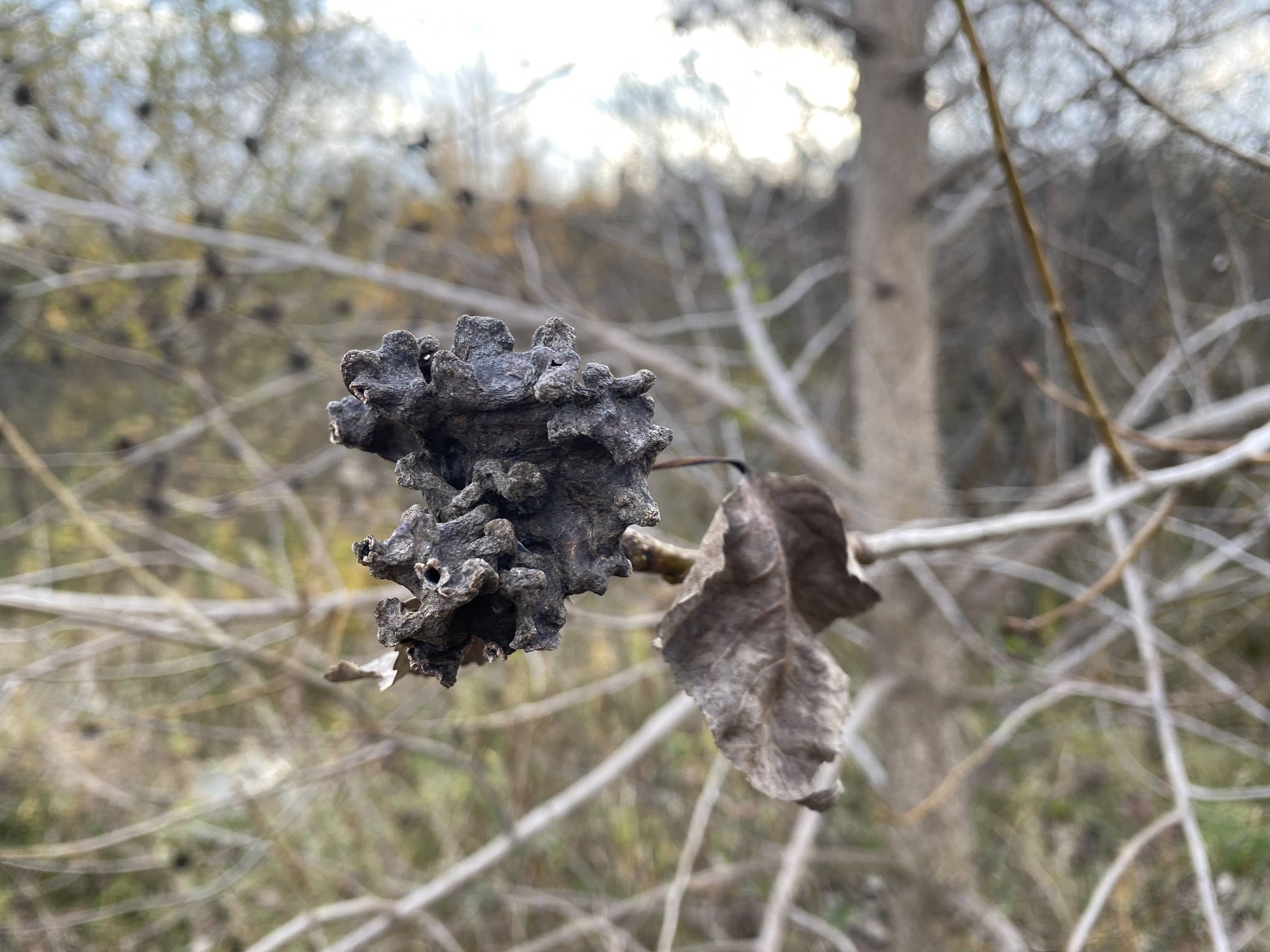
Ep. 238 : Looking At Two Unusual Galls
This passed weekend I was able to go out tracking with folks at Wiijindamaan where I once again notice the Poplar Vagabond Aphid Gall. And last week, I was having another conversation with folks about the Spruce Pineapple Adelgid Gall. Galls persist through the Winter and into Spring when many of the insects which have created them will begin to emerge.
Since now is the time to be keeping an eye out for the insect emergences, I figured I would share my excitement for these two galls. Not only are they beautiful and unusual, but they also highlight my growing feelings on what I call “biology 202”, a deep appreciation for the complexity of life beyond our cultural assumptions. It’ll make more sense when you hear it.
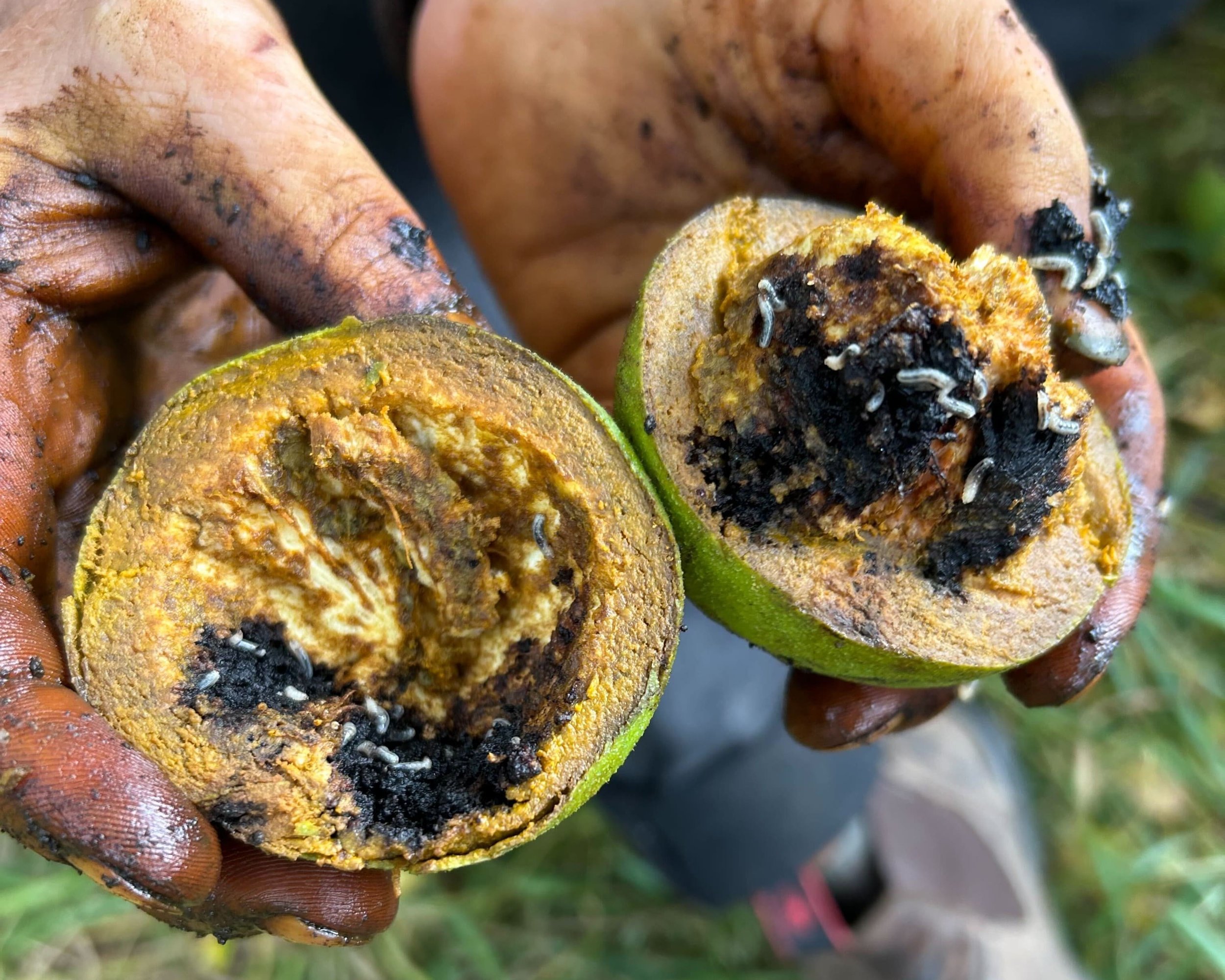
Ep. 228 : Walnut Husk Maggot Fly
Every big mast year for Black Walnuts I like to harvest a ton of them and then process them for both the husks and the nutmeat inside. While the nutmeats are very troublesome to access it is getting easier as I learn which tools are better than others, and the food value is totally worth it. As for the husks, it’s pretty easy to rip or cut them off of the nut. This year, as in previous years as well, there has been a small ethical dilemma which has come up when using the husks for dye. Nestled in the husks are small larvae of what I believe to be the Walnut Husk Maggot Fly which is a fruit fly I don’t know much about. But because I love Walnuts, I figured I should learn.
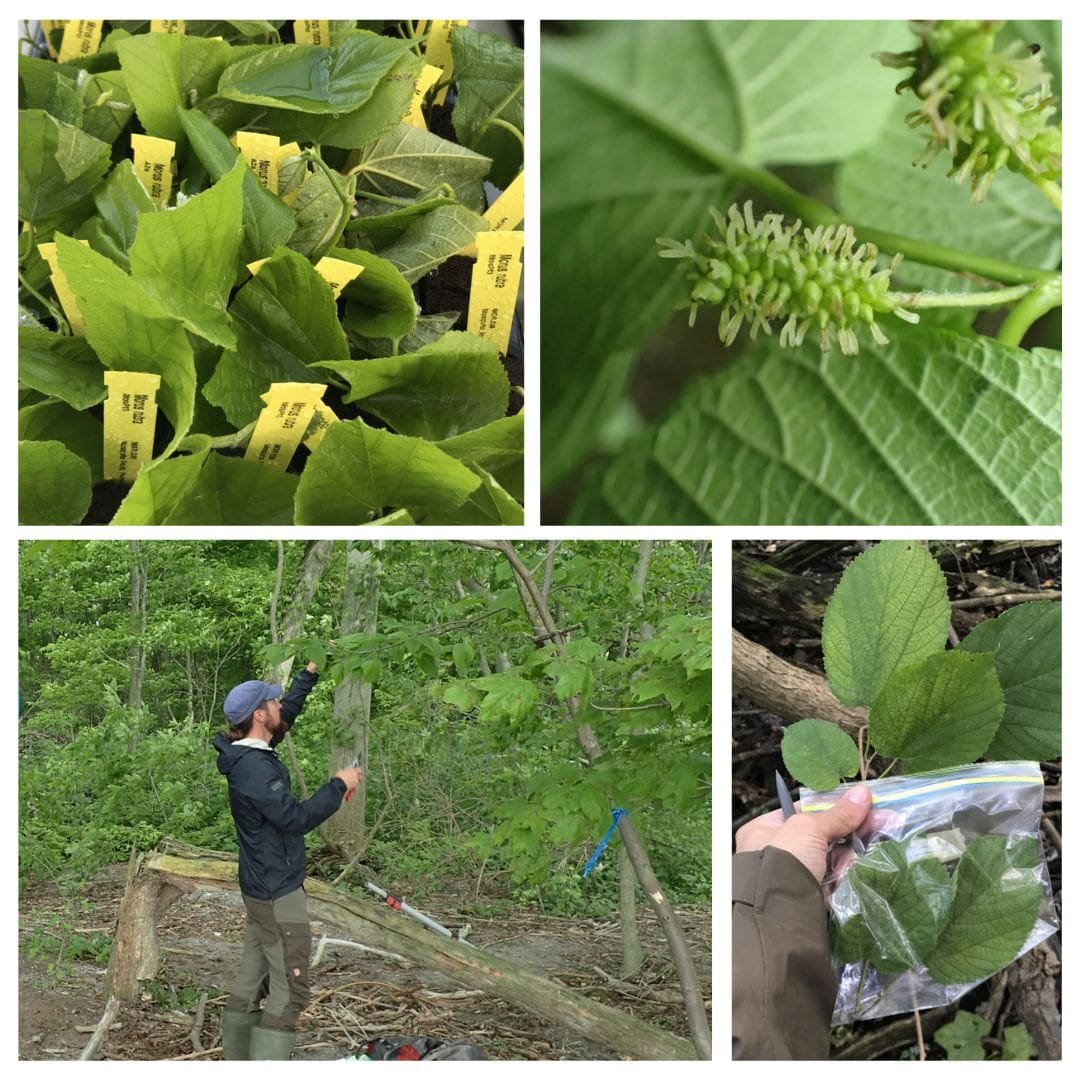
Ep. 222 : Red Mulberry Recovery Program with Sean Fox
A couple of days after my recent interview discussing Mulberries with Matt Soltys, the Arboretum at the University of Guelph shared a couple of posts on instagram about the Red Mulberry Recovery Program where researchers are looking into how to identify, propagate, and eventually distribute Red Mulberries to their partners. They are also trying educating the public on how the White or Asian Mulberries can be detrimental to conservation of the Red Mulberries. Immediately I wrote to them to try and set up and interview.
Gratefully Sean Fox, senior research associate at the Arb, took the the time to get into the complexity and nuance of dynamic movements of species and how we can take actions towards conservation of a species which is endemically endangered.
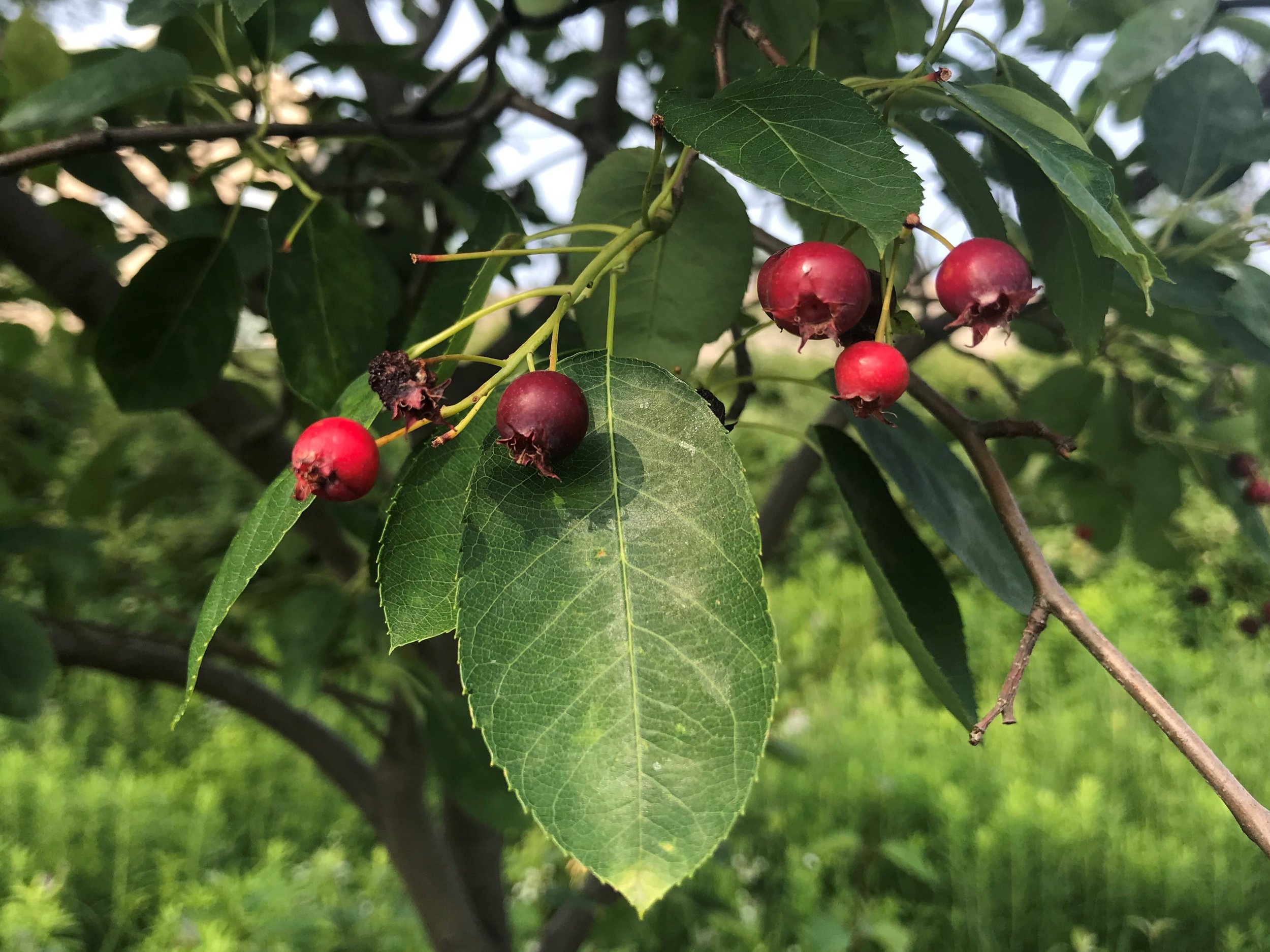
Ep. 220 : Discussing Serviceberry
The Serviceberry is a widely distributed edible fruit tree which fills my heart as much as my belly. It’s just sweet enough, with berries just big enough, just in reach to make me so happy to come across. Sometimes we happen upon them wandering through the woods, sometimes we go visit our favourite individuals, sometimes we make detailed extensive maps of every tree the city has planted… or maybe I just do that.

Ep. 219 : Discussing Mulberries with Matt Soltys
Mulberries are a well known and popular wild urban edible that a lot of foragers come to know early in the development of the craft. They are easily identifiable, taste great, and prolific in urban and peri-urban environments which means lots of people can get to know them. Not only are there an abundant of Mulberry trees out there, each fruit producing tree makes buckets of fruit that litter the sidewalks for a month if the birds, squirrels, Raccoons and humans don’t get at them first. And while Mulberries don’t seem like a political focal point in the world of conservation, I am learning that they can be as well.
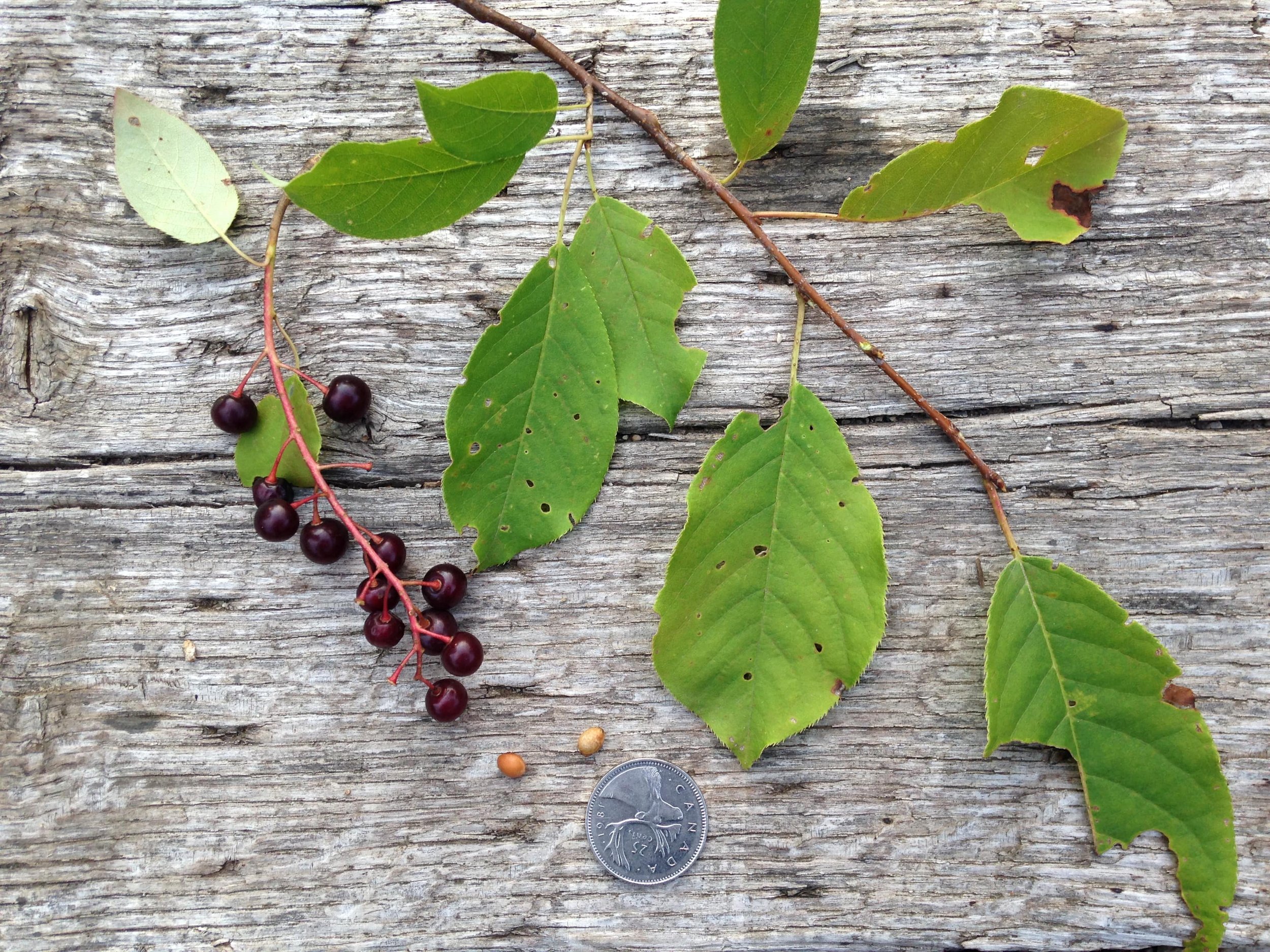
Ep. 218 : Considering Chokecherries
Chokecherry is a role model. How can we be in good relationship with so many different life forms, transform degraded and barren anthropogenic landscapes in preparation for new life? Yes, there is a note of caution to be had, an awareness of potential hazards, but the overall theme of this shrub appears to be regeneration, repair and creating spaces for life to flourish again.
This episode is a long form exploration of the Chokecherry ecology. I hope it works for you as much as it works for me!
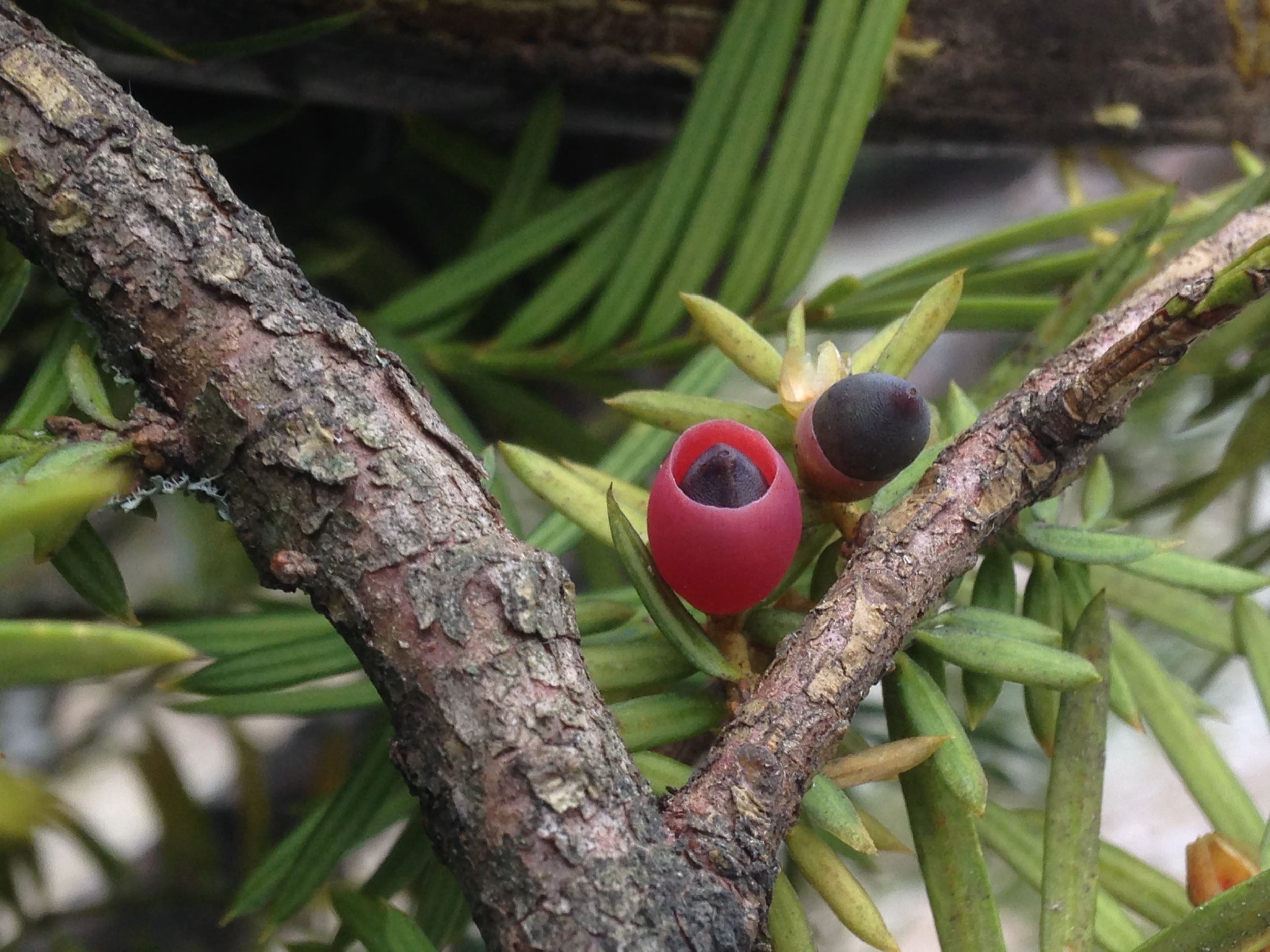
Ep. 203 : I’ve Been Thinkin ‘Bout Yew..
It started with a suggestion that I could learn a little about how to differentiate between Canada Yew, Eastern Hemlock, and Balsam Fir, but then it turned into a zany rabbit-hole of discovery, confusion and awe.
The Yew family, Taxaceae, is a beautiful family, holding long lines of mythos and medicines. I keep being challenged in my assumptions as I pull the threads of knowledge, and it excites me more and more the more I learn.

Ep. 185 : In conversation with Lorraine Roy, and Greg Kennedy SJ.
By calling, Greg is a Jesuit priest. Lorraine, a textile artist. Both have a keen eye for observation, and translation. Learning to see the wonder and awe embedded in the guardians of the air we collectively breathe, the trees, they render the arboreal grace and might into earthly transmissions which allow us to know the land a little better.
On Earth Day weekend, April 22-24, Greg Kennedy, Lorraine Roy and I will be facilitating a retreat at the Ignatius Jesuit Centre with the theme of Trees. In this conversation we share some of why we are involved in this project, and to reflect on what brought us to this work, who has inspired us, and what we hope to bring to this emergent weekend.
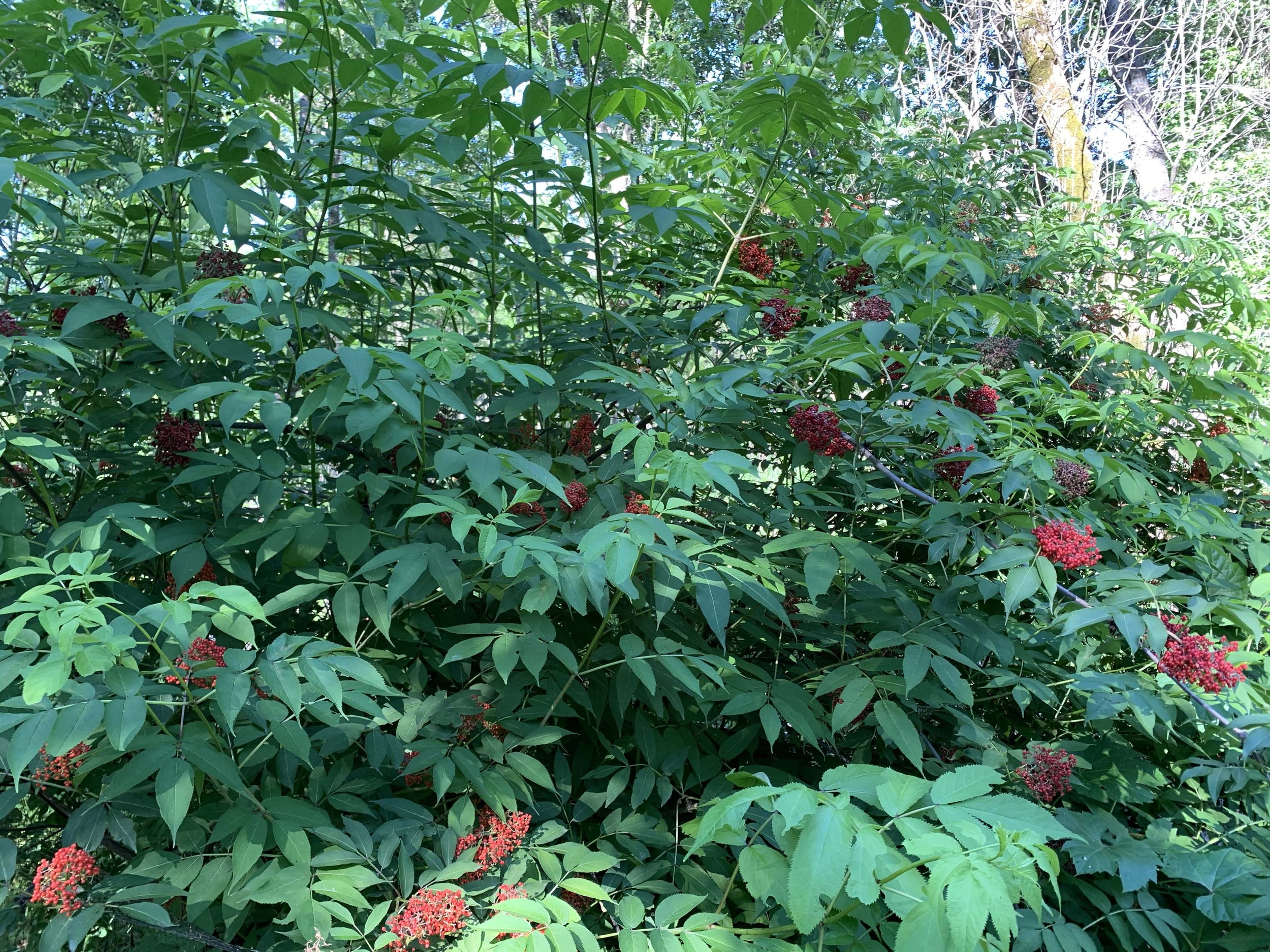
Ep. 181 : Buckthorn Phenology and Possible Management Strategies with Mike J. Schuster
I have seen and been part of a lot of Buckthorn (Rhamnus cathartica) removal efforts, and while initially hopeful, often there is a inevitable return of the non-native to once again take over the forest understory in short time. What if there were strategies, without herbicides or biocontrols to reduce or prevent the likeliness of Buckthorn’s recolonization?
Mike J. Schuster from the Department of Forest Resources at the University of Minnesota recently co-authored a paper looking into native phenological competitors to Buckthorn which can be planted after Buckthorn removal to help keep R. cathartica out. Luckily for me, one of the suggestions was a (fairly simple) practice I have been learning about and working on for the past 5 years! Plant more Elderberry! Sambucus canadensis and perhaps even more so S. racemosa can help block out the light essential to early Buckthorn growth. By planting these two shrubs , who have similar phenological timelines to the Buckthorn, we can help restore native biodiversity in forests experiencing Buckthorn invasions.
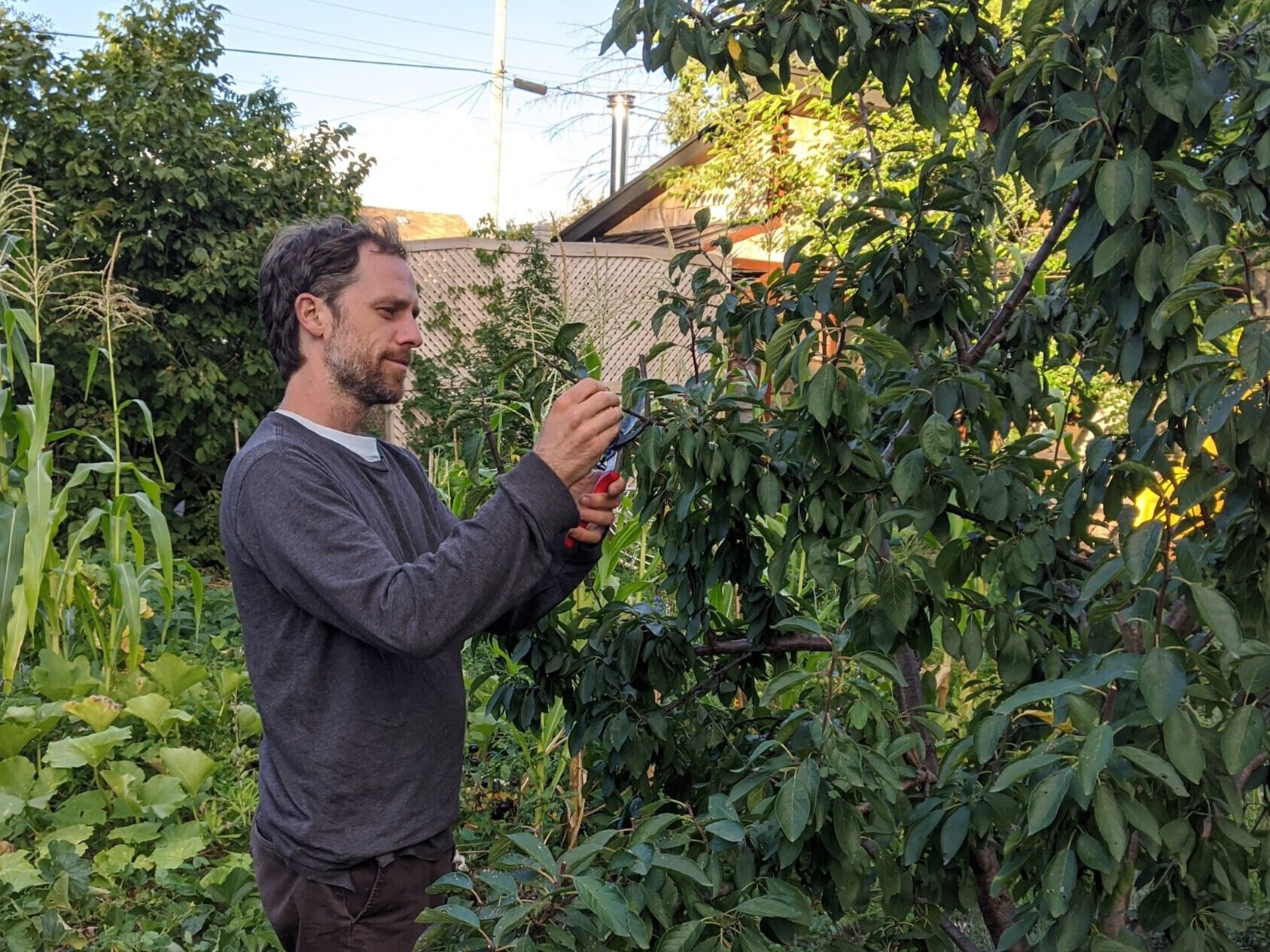
Ep. 171 : Matt Soltys, The Urban Orchardist
I sat down with an old friend, Matt Soltys, otherwise known as The Urban Orchardist, for a conversation about his work as an orchardist, and his business helping folks start growing their own.
We spoke about food sustainability, local food culture, how fruit trees help sequester carbon, build community and of course, give food.

Ep. 167 : Black Walnut
Black Walnut (Juglans nigra) is a tree I have been building relationship with for years. Through gathering, processing, storing, cooking, dyeing, planting, distributing and educating, this has been a plant I have come to know a lot about, and with whom I have shared some of myself with. I do not know Walnut in all stages (I long to know the flowers more), and I do not know the post glacial dispersal (it’s always nice to learn the backstory), I am slowly coming to understand the more than human relationships this tree has with the world around them. I am also deepening my understanding of the complex relationships this plant has with humans.

Ep. 162 : Talking trees with Dawn Matheson
Dawn Matheson wants to start connecting with trees, or a specific tree rather, at the University of Guelph Arboretum but she’s unsure which one yet. There is a process to get to know a tree and she is in the midst of sorting out that process. How do you find a friend in a tree when the culture around us says humans and trees can’t be friends? Well, she makes friends with other humans who are already friends with trees and starts from there.

Ep. 161 : Approaching Nonhuman Ontologies with Dr. Sarah Abbott
If you have listened to the show in the past you’ll know that I am interested in interspecies communication. Usually I focus on animals, especially birds and bird language. Dr. Sarah Abbott is also interested in interspecies communication, and recently completed her doctoral research project with a focus on communication between humans and trees. I thought this was exciting, so I had to find out more.
Dr. Abbott and I spent a couple of hours just “webbing it out”, wondering for answers; it was a non-linear conversation, echoing miles of mycelial threads searching out nutrients in the dirt beneath the perceived forest… just the right way to talk about talking with the trees.
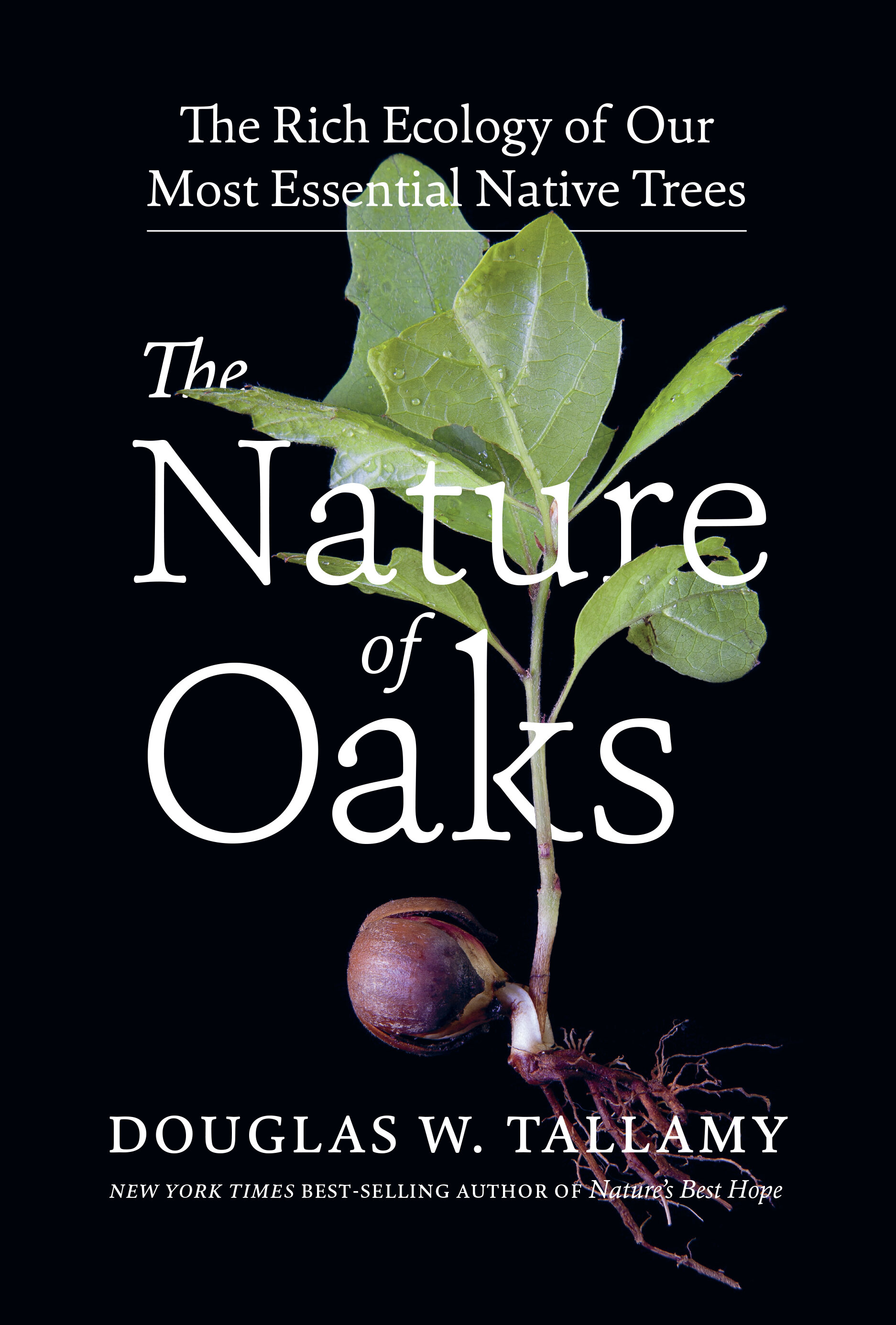
Ep. 153 : The Nature of Oaks with Doug Tallamy
Doug Tallamy’s new book “The Nature of Oaks : The Rich Ecology of Our Most Essential Native Trees” is a month-by-month study of the ecology of Oaks. A perennial dive into the cycling inhabitants and visitors to Oaks throughout the year. While not quite a field guide, the book does offer detailed explanations, accompanied by large colour photographs, on a multitude of various insect and bird species who are interacting with the Oak.
This book, and interview, are full of natural history of the Oaks, as well as a call to action for those who have the means to plant an Oak.

Other platforms where you can listen to the show :
As well as : Breaker : Overcast : Pocket casts : RadioPublic



